If your Windows PC is experiencing issues and you have tried out all the common solutions but are unable to resolve them, you may have to check the error logs that the OS creates. Windows creates log files for all events, whether they are successful or not, which can be useful when you want to find out why your computer is running into problems. These logs can help pinpoint the exact cause so you know how to deal with it. You can check crash logs in Windows 11 in a few different ways.
Method 1: Using the Windows Event Viewer
- Open the Start menu, type
event viewerand click on the tool when it appears in the search results. Alternatively, you can open the 'Run' dialog using theWin + Rshortcut and typeeventvwr.mscbefore pressing Enter.
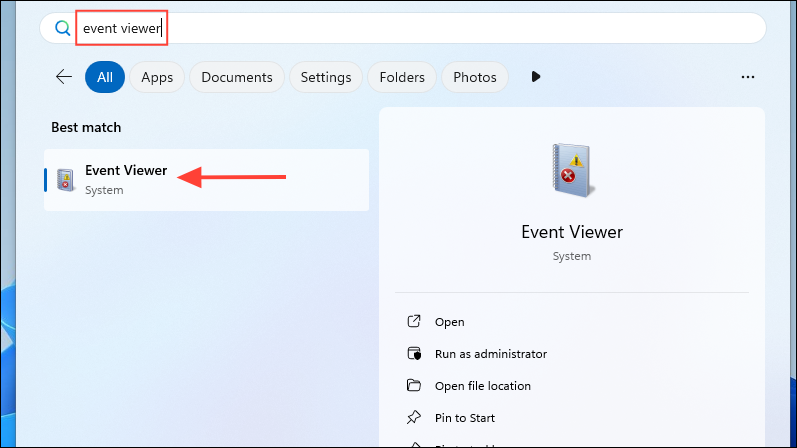
- When the Event Viewer opens, double-click on 'Windows Logs' on the left.
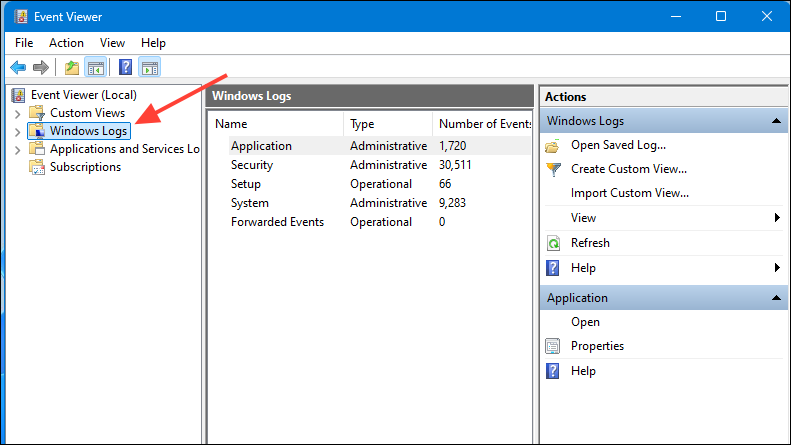
- Then click on 'System' and all system-related events, such as crashes will appear on it as a list.
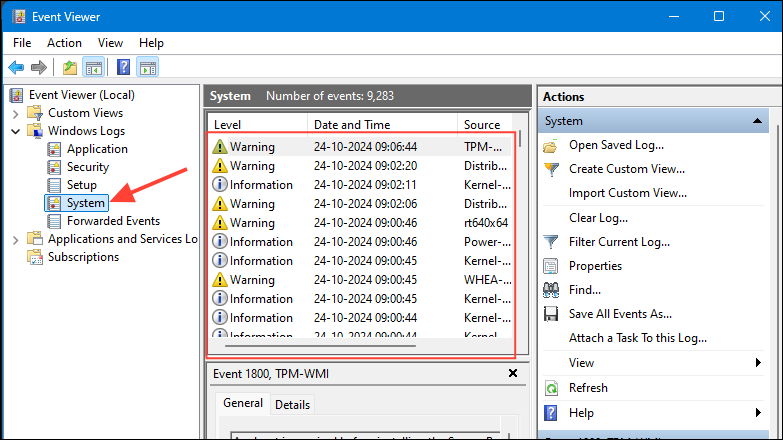
- You can also view all application-related crashes and errors by clicking on 'Application' on the left.
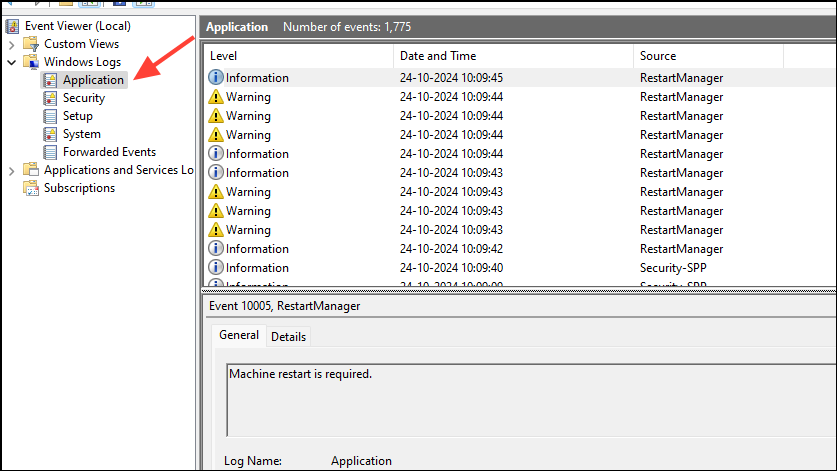
- To separate the crash events from others, click on 'Filter Current Log' on the right side.
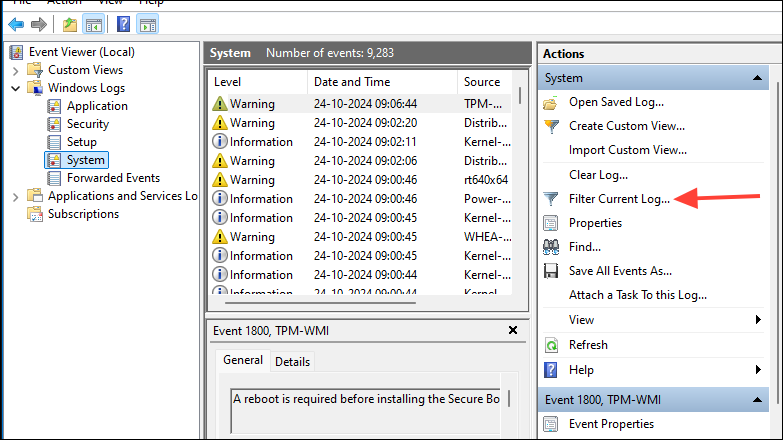
- When the 'Filter Current Log' dialog box opens, the 'Filter' tab will be selected at the top by default. Click on the 'Logged' dropdown menu and select the time range for which you want to filter the crash logs.
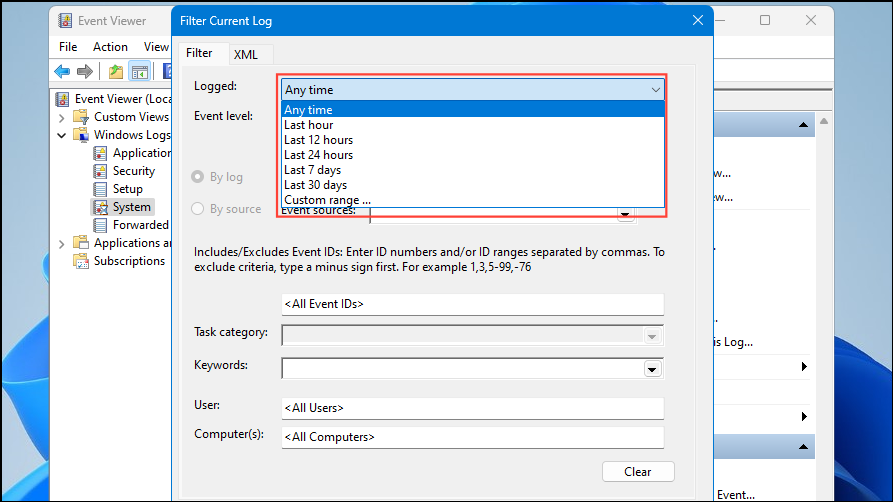
- Next, click on the 'Critical' and 'Error' checkboxes next to the 'Event level' option before clicking on the 'OK' button.
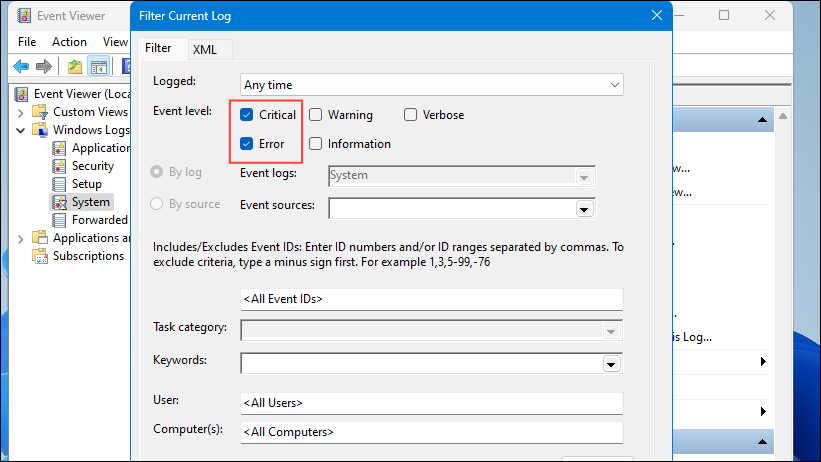
- Once the logs are filtered, you will see a fresh list of error logs. Search for critical events that are related to crashes with IDs like 41 (for system crashes) or 1001 (for Windows Error Reporting).
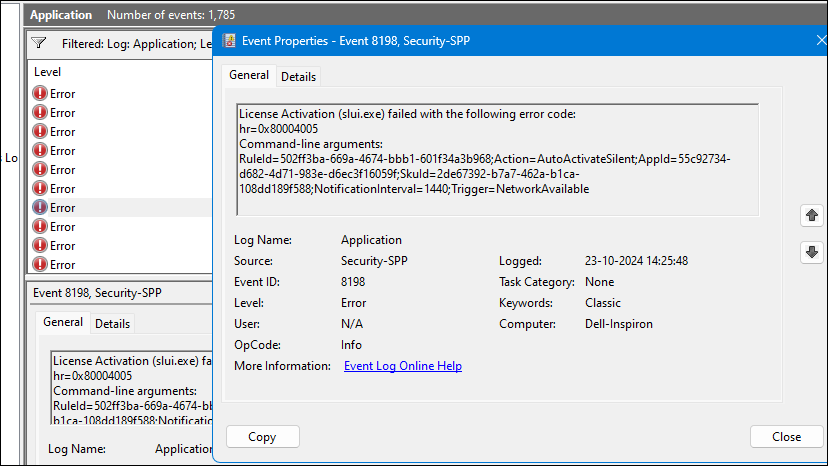
- Double-click on any item from the list to view the details of the crash. You can also switch between the 'General' and 'Details' tabs at the top to access more information.

Method 2: With Windows PowerShell
You can also check crash logs using Windows PowerShell or Command Prompt.
- Open the Start menu, type
powershelland click on 'Windows PowerShell' when it appears in the search results.

- When the PowerShell window opens, paste the following command inside and press Enter:
Get-EventLog -Log system | where {$_.entryType -match “Error”}. PowerShell will retrieve the entire event log, which will include Error events.
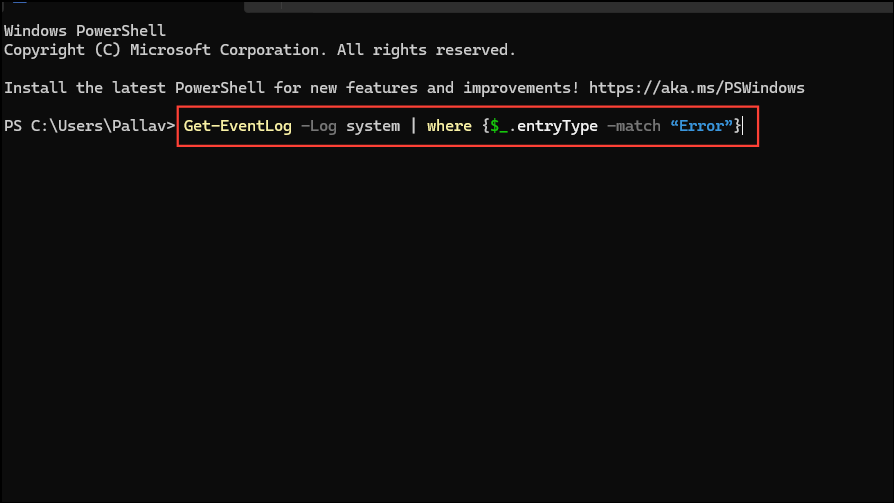
- You can also view the last 30 entries only using the following command:
Get-EventLog -LogName System -Newest 15 -EntryType Error.

Method 3: Using Reliability Monitor
Windows also comes with a built-in tool called Reliability Monitor that provides a graphical representation of your system's stability. While it does not show you crash logs directly, it can be very helpful in identifying problems with your system.
- Open the Control Panel from the Start menu and click on 'Security and Maintenance'.
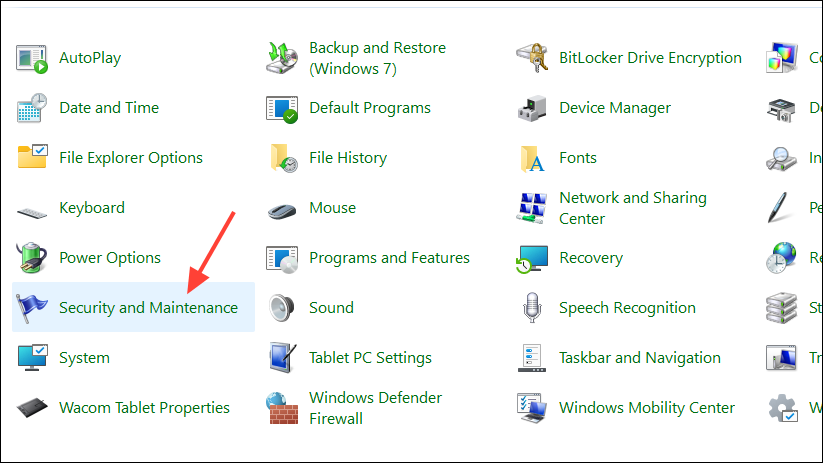
- Next, click on the 'Maintenance' dropdown menu and then click on 'View reliability history'.
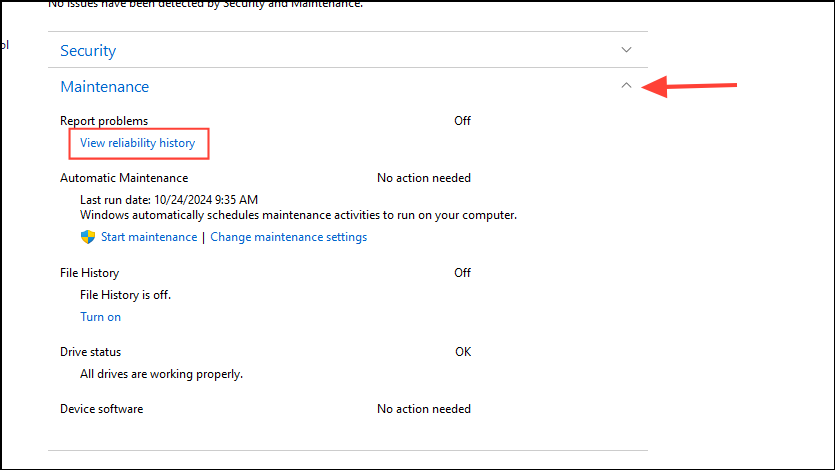
Method 4: View crash logs using BSOD
You can also use the Windows Blue Screen of Death or BSOD to view error details by editing the registry using the Registry Editor.
- Open the Start menu, type
regeditand click on Registry Editor in the search results.
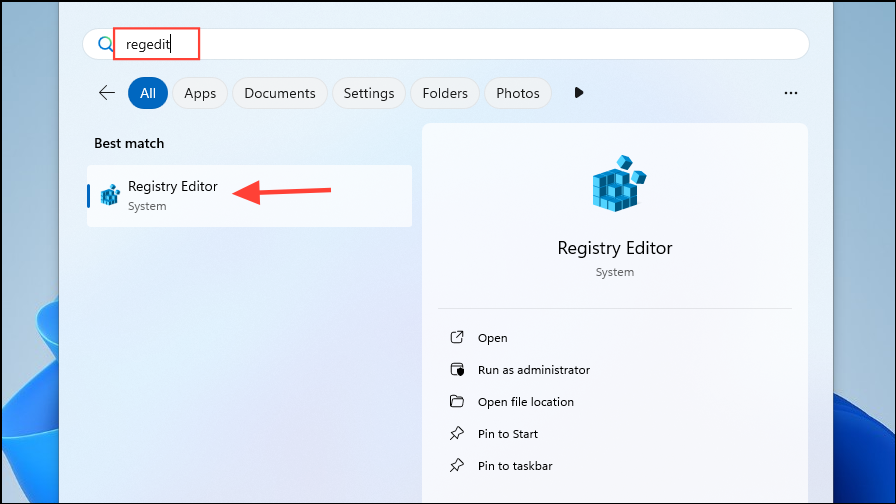
- When the Registry Editor opens, navigate to the following location:
Computer\HKEY_LOCAL_MACHINE\SYSTEM\CurrentControlSet\Control\CrashControl.
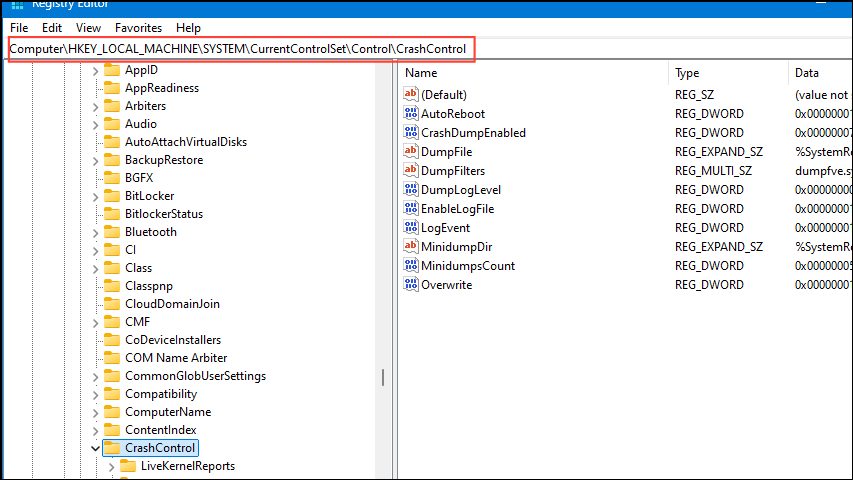
- Now right-click on the right side and go to new before clicking on 'DWORD (32-bit) Value'.
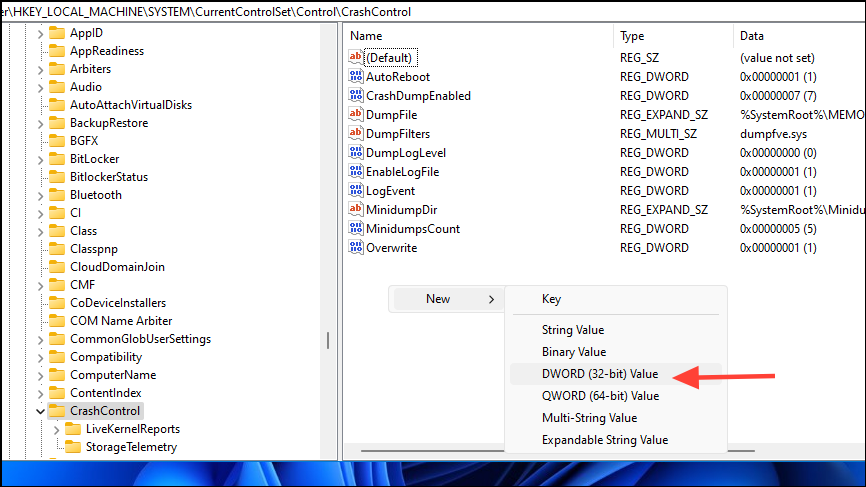
- Give the new entry the name
DisplayParametersand press Enter.
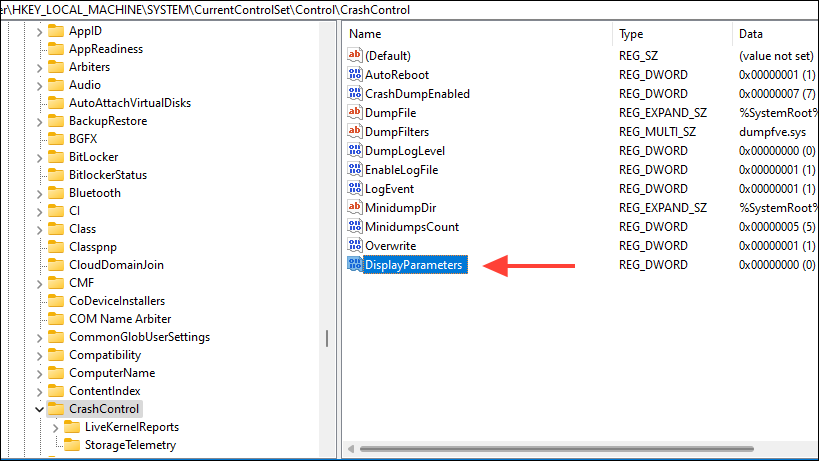
- Then double-click on it and enter the value
1before clicking on 'OK'. Then restart your computer. Now, whenever you encounter a BSOD error, the error details will also appear on the screen.
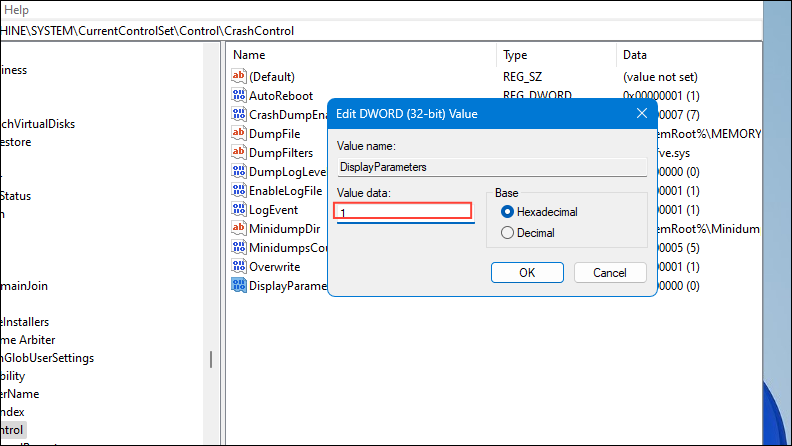
Things to know
- The Event Viewer shows several types of logs but you should pay attention to the Error and Critical logs since these are the logs that usually contain information regarding system crashes.
- Some Windows tools like Disk Cleanup and several third-party programs let you clear log files from your system to save space and free up memory. However, the logs will be removed and you won't be able to use them to diagnose errors that are causing problems when you use your PC.
- As a precautionary measure, you can back up your event logs by exporting them into a file. You can then import them back into the Event Viewer when needed.


